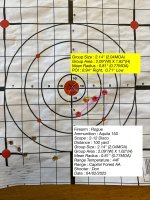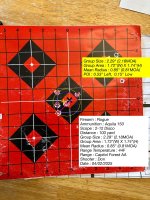Yes. I’m talking about the barrel nut tightly fitting on the upper receiver threads, using the aluminum receiver as part of the hoop stress containment in conjunction with the barrel nut.My POF, the barrel nut doesn’t even touch the outside of the barrel past the threads. From the factory the barrel has .03” on either side. Both of them were like that.
You have layers with the AR-15:
Steel chamber wall in the barrel threaded tenon
Barrel extension (needs to be tightly-fit without a relief cut for the thread origin near the barrel extension flange)
Aluminum upper made from higher density billet
Barrel nut
Frank was using all of those as part of the formula for hoop stress containment.
On a normal rifle barrel and receiver, it’s just the thick chamber walls and steel receiver.
When you hog out the tiny AR-15 threaded tenon for a .473” case diameter and don’t increase the diameter of the steel like on an AR-10, you have to compensate for it somehow.
Different thread pattern and length with the extension can be part of that, but meat has to come from somewhere.
Part of the formula for hoop stress containment with the Revolution is the upper receiver and barrel nut tightened down on the threads.
This is probably what Frank was referring to when he said he was afraid to do the AR-15 chambered in .308 initially.



